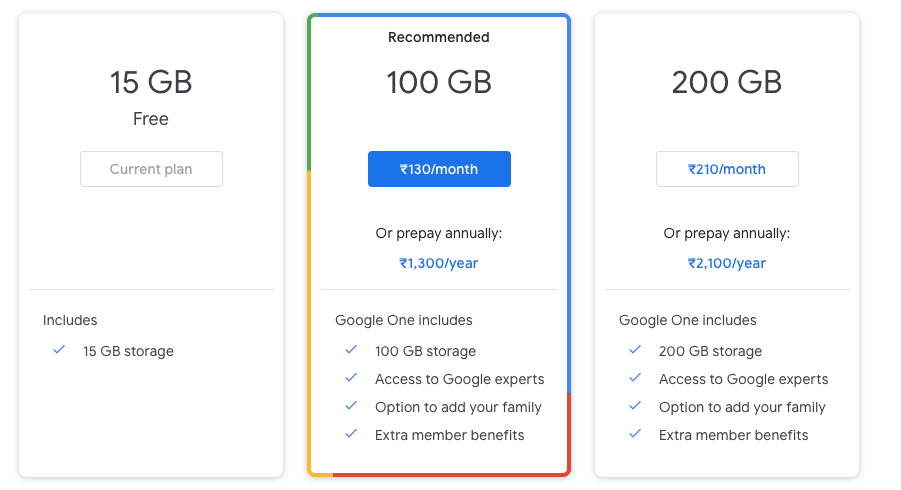1. Freemium model
1. Freemium model
You must have used Gaana or Youtube! You can play, listen & watch unlimited music & videos for free but have to pay to use other useful features like downloading the music offline or skipping the ads. This particular pricing model where you give your core product for free but charge for other “additional” features is called as Freemium Model.
Free + Premium ➡️ Freemium 🚀
Why freemium? 🧨
1. Freemium isn’t a pricing model. 🏆 It’s a customer acquisition strategy.
Customer acquisition is tough. For instance, in a report released by A Bright VC, 20-25% of the total revenue in the Indian ed-tech industry is spent on customer acquisition. And, acquiring customers is getting costlier every day.
Dan Ariely, a famous behavioral economist had mentioned that there is nothing in this world that attracts humankind more than the word “Free”.
The more users you have on the top of your funnel (i.e. users who use your product); the conversion rate (i.e. their likelihood to pay) is likely to be more.
When Notion converted its pricing to a freemium model; their COO Akshay Kothari made a very profound remark and summed up freemium well.
The biggest motivation (right now) is just capturing market share - getting more people to use Notion.
Freemium helps you to undercut competitors, win market share quickly and stand out in a competitive market.
2. Freemium creates better product insights 💡
I absolutely love listening to music on Spotify. For me, Spotify’s biggest value proposition is that it suggests great music.
Spotify leverages data to suggest great recommendations to its users.
More users -> More data -> Powerful recommendation
Thanks to the Freemium! Even though only 27% of the total Spotify users pay; the remaining 63% make the product more & more valuable. (for everyone)
Spotify leveraging network effect of its user for awesome recommendations

Elena Verma who leads monetization and experimentation at Reforge mentions that products that understand their target audience, customer problems, and behavioral patterns better than their competitors win in the long run.
No matter how good your user research is, the best way to validate a product's value proposition or optimize a user experience is to see how people actually use your product.
Freemium gives you that scope. Your free users reduce your research & experimentation cost by giving you invaluable insights.
3. Freemium creates product evangelists 💋
Your free users can either become paid subscribers or can draw in someone else who becomes your subscriber (that’s network effect, right?)Research published in Harvard Review Business states that free users can bring about 15-25% of paid users in a freemium model. (if the referrals are done right!) What can be better than your free users turning into an evangelist?
4. Freemium creates strong user habits 🔨
I have seen this first hand with Notion. Many of us use Notion’s free personal plan for knowledge management. At first, Notion seems overwhelming but the more you start using it, you discover more and more awesome use cases. You get hooked on the product and build a strong habit.
It would be very difficult to realize the true value of Notion and make a commitment to pay for it before trying it extensively!
5. Freemium keeps the product team at its toes ⛱
Freemium also shifts the pressure of growth and monetization on the product team from the marketing and sales teams. When your product can communicate a strong value proposition on its own; it helps in building a much stronger habit, retention & growth.
Freemium & its type ⚽
Limited features ➡️ Youtube is a perfect example of a freemium product with limited features. You can use the core product lifetime for free but have to pay for additional features like skipping the ads & downloading videos offline.
Limited usage ➡️ Airmeet (a 🇮🇳 video conferencing SAAS product ) allows you to host 100 registrations per event for free. Post 100 registrations, you need an upgradation.

- Limited capacity ➡️ Google Photos gives a free 15 GB cloud storage. Once you cross the storage limit; you need to upgrade.

- Limited support ➡️ Mailchimp offers 24*7 support from its paid users but its free users have to wait for 1-2 working days for customer support.
Cons of freemium pricing 🔪
1. Users (a lot of them) may never convert to paying 😚
Freemium creates a scope of acquiring the wrong type of users - a set of users who are extremely happy with the core product & have little urgency to buy. Let me give you an example. I absolutely love Grammarly. I use it almost every time I write online but I (think) I would never buy a paid version no matter how well they nudge me.

They say that the biggest competitor of Grammarly is “Grammarly free”
Conversion rates in the freemium model are always low! The typical conversion of free to paid users is only somewhere around 2-3% in India’s ed-tech space and the industry standard for free to paid conversion in the freemium model is a mere 2-5%.

2. The cost to support free users is high 💥
Freemium pricing is a cost-intensive pricing model. Why? The free users will use your product and would require support. Your developers & support team would be busy solving tickets for them! (damn! your server cost). All these costs you something (or maybe significant).
Freemium model has a lot of costs. 💰 It includes:-
- The cost of acquiring a free user
- The cost of serving a free user
- The cost of marketing and selling to a user in a paid model
- The cost of serving a paid user

3. Freemium is a product management night-mare 🤔
Freemium pricing can make the product roadmap highly feature-driven which is against the famous 80-20 rule of product management (80% of users use 20% of your product features). Product teams start chasing features mindlessly.
It also takes a lot of bandwidth for the product team to decide which features will be free and which will be behind the paywall. This is not a one-time decision too. You need to spend some time, gather enough data, and analyse which feature fits where - free or paid.
Pro-tip: Always launch the feature free for a certain time frame & then move it to the paywall if a lot of users are using it.